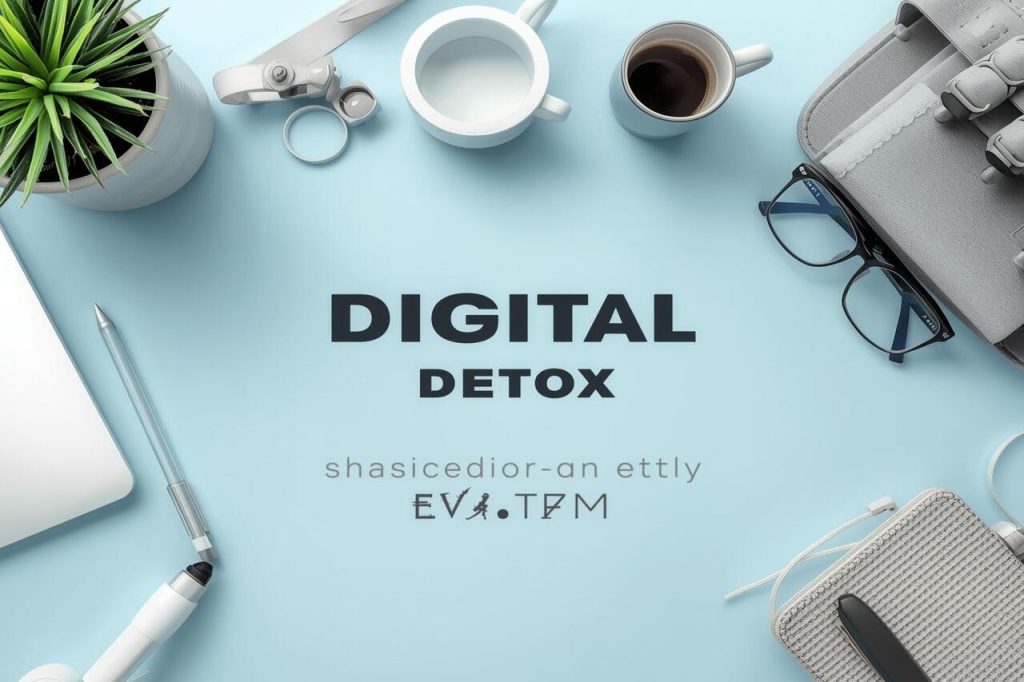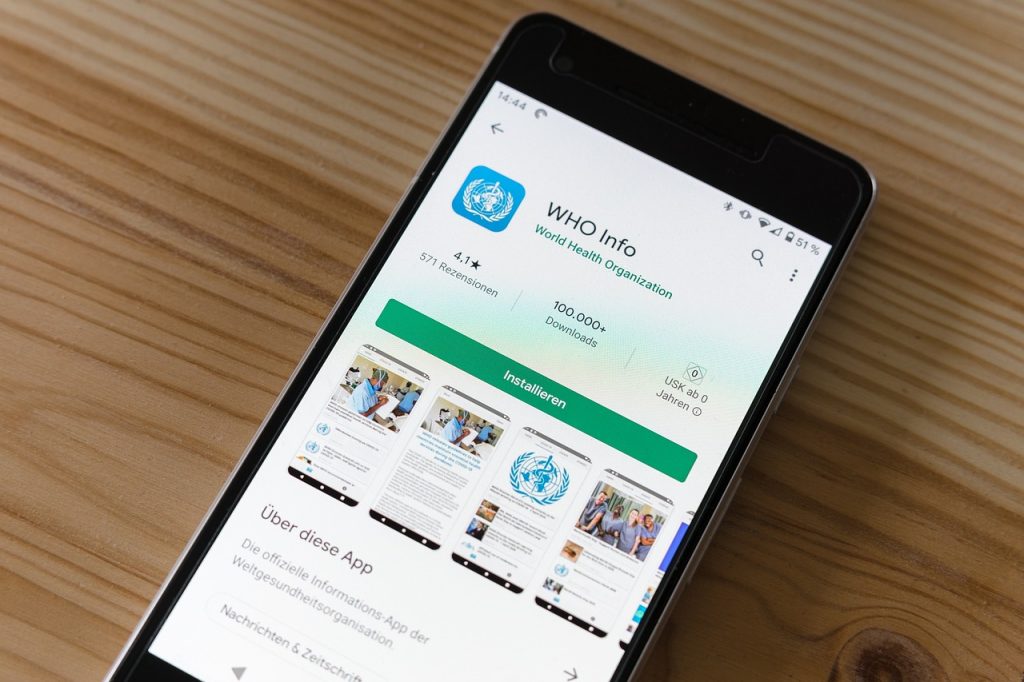4 Powerful Digital Detox Strategies Backed by Science to Improve Your Smart Lifestyle

Discover how Digital Detox Strategies can help you balance technology with wellbeing. These science-backed approaches are designed to reduce screen fatigue, sharpen focus, and improve your overall smart lifestyle.
Why Digital Balance Matters in a Smart Life 🤳➡️🌿
Smart devices make life easier — but they also blur boundaries, scatter attention, and quietly drain our wellbeing. If you want to enjoy the benefits of technology without becoming ruled by it, practical and evidence-based Digital Detox Strategies are essential. This article gives you four science-backed approaches that are simple to try and powerful in effect.
How to read this guide
Each strategy below includes why it works, step-by-step actions, and quick wins you can implement today. Use the strategies together for compounding benefits — they’re complementary, not exclusive.
Read more: 5 Innovative Smart Wellness Technology Trends Revolutionizing Healthy Living in 2025
Ready for a smarter, calmer relationship with tech? Let’s dive in. ✨
Strategy 1 — Scheduled Screen-Free Windows (The “Block & Reclaim” Method) 🕒
Modern attention research shows that uninterrupted focus improves when we schedule deliberate breaks from screens. Start by blocking 60–90 minute windows in your day that are completely device-free — phone off, notifications muted, and screens closed.
Use that time for a single meaningful activity: deep work, a walk, cooking, or talking with family. This chunking reduces context-switching and lowers cognitive fatigue, helping you get more done in less time. To make it stick, anchor the window to an existing routine (after breakfast or before dinner) and set a gentle timer. Over weeks, your brain will adapt and you’ll notice better focus, calmer mornings, and less impulsive scrolling at night.
Combine this with a short planning ritual (one sticky note or a paper to-do list) so your mind isn’t tethered to apps during the break.
Strategy 2 — The Notification Audit (Cut the Noise, Keep the Signal) 🔕
Notifications hijack attention by design, creating chronic alertness and interrupt-driven behavior. Do a quick audit: for 48 hours, note which notifications you actually respond to and which you ignore.
Then go into your phone and app settings to disable non-essential alerts (promotions, social “likes”, and most push banners). Keep notifications only for critical apps — messaging from close friends/family, calendar reminders, or apps that support safety. Use “summary” or “scheduled delivery” features where available so non-urgent updates arrive in one batch.
The reduction in dopamine-driven interruptions yields a calmer mind and longer uninterrupted focus sessions. You’ll also sleep better if you move notification-heavy apps to “Do Not Disturb” after a set hour each night.
Strategy 3 — Radical Bedroom Boundaries (Reclaim Your Sleep Sanctuary) 🌙
Sleep science connects screen exposure, especially blue light and cognitive arousal, with worsened sleep quality. Make your bedroom a device-free sanctuary: charge phones outside the bedroom, switch smart devices to night mode, and use an actual alarm clock if needed.
Create a calming pre-sleep routine — reading a paper book, light stretching, or a 10-minute breathing practice — that signals your brain it’s time to downshift. Studies show that consistent digital curfews (e.g., no screens 60–90 minutes before bed) increase slow-wave sleep and reduce nighttime awakenings.
If you need a nightlight, use a low-lux red/orange lamp rather than the cool white of most devices. Over time, this boundary improves daytime energy and reduces the habitual night-checking that fragments sleep cycles.
Strategy 4 — Purposeful App Diet (Eat Intentionally, Scroll Less) 🍽️📱
Think of your app ecosystem like a pantry: if you keep only nourishing options, you naturally eat better. Do a weekly “app triage”: uninstall apps that create passive consumption or anxiety (endless feeds, comparison-heavy platforms, or multiple messenger apps with overlapping use).
Replace them with high-value alternatives — a dedicated reading app, mindfulness timer, or hobby-focused groups. Limit social media to one app or designate fixed check-in times (e.g., 20 minutes after lunch). For platforms you keep, curate your feed aggressively: unfollow accounts that trigger envy, and follow ones that teach, inspire, or calm.
This purposeful curation reduces decision fatigue, lowers compulsive checking, and helps you regain hours each week for creative or restorative activities.
Practical 7-Day Plan to Start — Quick Wins You Can Use Today ✅
- Day 1: Do the Notification Audit — turn off non-essential push alerts.
- Day 2: Set one 60-minute screen-free window after breakfast.
- Day 3: Move phone charging station outside the bedroom.
- Day 4: Uninstall one app that causes passive scrolling.
- Day 5: Try a 10-minute evening wind-down routine (no screens).
- Day 6: Batch your messages: schedule two 20-minute times to reply.
- Day 7: Reflect — note improvements to focus, sleep, or mood; tweak the plan.
Read more: 10 Best Meditation and Mindfulness Apps for a Balanced Smart Lifestyle
Expanding Your Smart Lifestyle with Deeper Digital Detox Strategies 🌱📱
In today’s hyper-connected age, most people recognize the value of Digital Detox Strategies but struggle to make them sustainable. Detox is not about rejecting technology; it’s about designing a balanced relationship with digital tools so that your smart lifestyle supports mental clarity, physical energy, and emotional resilience.
In this extended guide, we’ll explore practical insights, real-life examples, and science-based perspectives that go beyond quick tips — ensuring that your detox plan actually sticks and evolves with your lifestyle.
The Psychology Behind Digital Overload 🧠
Before applying new Digital Detox Strategies, it’s crucial to understand why our brains get addicted to screens. Psychologists explain that every swipe, click, or notification delivers a micro-dose of dopamine, creating a loop of expectation and reward. Over time, this constant stimulation rewires neural pathways, making it difficult to focus, rest, or enjoy offline activities.
Recognizing this cycle helps us realize that digital detox is not just a productivity hack — it’s a mental health intervention. By reducing overstimulation, we give our brains space to repair attention spans, creativity, and stress response systems.
Case Study: Maria’s 14-Day Digital Detox Challenge 👩💻➡️🌳
Maria, a 29-year-old marketing professional, noticed she was spending more than 7 hours a day on her phone. She decided to try simple Digital Detox Strategies for two weeks. In the first few days, she experienced “withdrawal” symptoms: restlessness, fear of missing out, and even phantom vibrations. However, by Day 7, she reported feeling calmer and sleeping an extra hour each night.
By Day 14, she cut her social media use by 50% and found time to start watercolor painting again. Maria’s story proves that detox is less about deprivation and more about discovering meaningful replacements for screen time.
Building Micro-Habits for Lasting Detox 🔄
One reason people fail at digital detox is trying to quit everything at once. Instead, think in terms of micro-habits. For example, replace your morning phone-check with a 5-minute gratitude journal. Swap late-night scrolling with a calming tea ritual. These tiny shifts, when practiced consistently, grow into larger behavioral changes.
Neuroscience confirms that micro-habits wire the brain more effectively than drastic, unsustainable measures. Over weeks, these small Digital Detox Strategies accumulate into noticeable lifestyle improvements without feeling overwhelming.
Environment Design: Detox Without Willpower 🛋️
Your environment often dictates your digital behavior more than self-discipline. Simple environmental hacks can make Digital Detox Strategies effortless: keep chargers outside the bedroom, create a phone-free dining area, or set up a bookshelf where your phone used to sit.
By making the healthy choice the easy choice, you avoid constant battles of willpower. Research in behavioral science shows that designing environments reduces decision fatigue, making it far easier to maintain long-term changes.
Digital Detox at Work — Thriving in a Connected Office 🖥️
Many professionals worry that detox conflicts with career demands. The truth is, well-structured Digital Detox Strategies can actually boost work performance. For example, try batching emails twice a day instead of checking them every 10 minutes.
Use calendar “focus blocks” that mute notifications during critical projects. Some companies are even adopting “no-email Fridays” to encourage deeper collaboration. Studies show that employees who implement structured detox routines at work report 23% higher productivity and 31% lower stress levels compared to those always connected.
Read more: 9 Must-Have Technology Tools for Remote Work and Work-Life Balance (2025 Guide)
Family-Friendly Digital Detox Strategies 👨👩👧👦
Detox is even more powerful when practiced as a family. Designate one evening per week as a “device-free night,” replacing screens with board games, cooking together, or outdoor activities. Parents who apply Digital Detox Strategies set strong role models for children, who learn that entertainment doesn’t have to be screen-based.
Pediatric experts suggest family detox rituals improve bonding, emotional intelligence, and reduce childhood anxiety linked to excessive screen exposure.
Weekend Retreats: Mini Digital Sabbaticals 🌄
Consider weekend retreats where technology is intentionally limited. This doesn’t require an expensive getaway; even a day hike, camping trip, or unplugged staycation can reset your nervous system. Such retreats give space for reflection, creativity, and deeper rest.
Pairing retreats with mindfulness practices — journaling, yoga, or meditation — enhances the benefits. These mini digital sabbaticals are among the most effective Digital Detox Strategies for breaking unconscious habits and returning to technology with intention.
Mindful Substitution Instead of Restriction 🧘
A sustainable approach to Digital Detox Strategies focuses less on restriction and more on mindful substitution. When you remove screen time, immediately replace it with nourishing activities: reading, gardening, sketching, or face-to-face conversations. If you simply remove screens without alternatives, your brain will crave the dopamine loop again.
Substitution rewires the brain by showing it that joy and stimulation exist outside digital platforms. This reframing transforms detox from a “punishment” into an enriching lifestyle upgrade.
Digital Detox and Physical Health 🏃♀️
Excessive screen time doesn’t just harm the mind — it also strains the body. Prolonged use leads to digital eye strain, poor posture, and sedentary habits. Incorporating Digital Detox Strategies encourages natural movement: standing more often, walking outdoors, or playing sports. Studies reveal that reducing evening screen exposure lowers late-night snacking and improves metabolic health. A detox, therefore, is not only mental hygiene but also a physical health intervention.
When Detox Feels Impossible: Handling Resistance 💡
Many people try Digital Detox Strategies but feel resistance after a few days. Instead of quitting, practice self-compassion. Resistance often comes from fear of boredom or social disconnection. Journaling these feelings, talking with friends about your detox, or joining online communities that encourage balanced tech use can reduce isolation.
Remember: setbacks don’t erase progress. Even small, irregular detox wins compound into measurable benefits over time. The goal is not perfection, but conscious awareness of digital habits.
Global Movements for Digital Wellbeing 🌍
Digital detox is no longer a niche idea — it’s a global movement. Countries like France have passed “Right to Disconnect” laws, giving employees legal protection from after-hours emails. Schools worldwide are piloting phone-free classrooms with positive results. Wellness resorts now market “digital-free vacations.” These trends highlight that society is beginning to value Digital Detox Strategies as essential for sustainable health in the digital era.
Bonus Tips for Daily Detox Success 🔑
- 📵 Keep a “digital sunset” rule: no screens 90 minutes before bed.
- 🌳 Pair walks with podcasts or, better yet, silence.
- 📖 Carry a pocket book or e-reader to replace idle scrolling.
- 🍽️ Make all family meals phone-free.
- 🚴 Schedule offline hobbies at least 3 times per week.
- ⏱️ Use apps that track screen time but delete them once you establish awareness.
Personal Reflection Exercise ✍️
Take five minutes to write down your top three screen habits that drain the most time. Next to each, brainstorm one replacement activity you’d genuinely enjoy. This creates a personalized roadmap for your Digital Detox Strategies. Keep the list visible — on your fridge, desk, or notebook — as a daily reminder that detox is about choosing what matters most.
Measuring Progress: Track What Really Matters 📊
Success is not just about reduced screen time; it’s about quality of life improvements. Track changes in your mood, sleep hours, physical activity, and relationships. Many people notice they laugh more, sleep deeper, and feel less anxious after consistent detox routines. By measuring meaningful outcomes, you reinforce motivation and celebrate progress, even when digital temptation remains.
Long-Term Vision: Creating a Digital Lifestyle Charter 📜
To sustain Digital Detox Strategies, design a personal “Digital Lifestyle Charter.” Write 5–7 principles that define your intentional tech use: no phones during meals, emails checked twice daily, weekly device-free evenings, and annual retreats. Post this charter where you can see it daily. Over time, this transforms detox into a lifestyle philosophy, aligning your smart lifestyle with your values, goals, and health needs.
Why Digital Detox Strategies Matter in Modern Life 🌍
While technology continues to shape our lives in countless positive ways, it is equally important to recognize when it starts taking a toll on our mental health and productivity. This is where practical Digital Detox Strategies come in, providing a roadmap for maintaining a healthier relationship with your devices. By consciously unplugging from digital noise, you give yourself space to breathe, reflect, and recharge your energy for the things that truly matter. 🌱
How Digital Detox Strategies Improve Your Smart Lifestyle ✨
Simple actions, such as limiting push notifications, setting designated screen-free zones at home, or even enjoying device-free meals with loved ones, can significantly enhance your smart lifestyle. When you adopt these Digital Detox Strategies, you are not only improving focus and reducing stress but also reclaiming control over your time and attention.
🔋 The beauty of this process is that you do not have to cut off technology completely; instead, it’s about using it mindfully. With consistency and balance, your digital life becomes a powerful tool instead of a constant distraction, helping you create a lifestyle that feels both smart and sustainable.
Read more: Top 7 Smart Kitchen Gadgets for Easy and Healthy Cooking
FAQs — Common Questions About Digital Detox Strategies
Q1: How long should a digital detox last?
A: Start small — 1–2 hours daily or a full 24-hour weekend once a month. Consistency matters more than extremes; short, regular detox windows produce lasting gains in attention and stress reduction.
Q2: Will a digital detox harm my work productivity?
A: No — when designed thoughtfully, a detox increases productivity by reducing interruptions. Use scheduled check-ins and out-of-office messages to maintain communication while protecting focus blocks.
Q3: Can children or teens do digital detoxes?
A: Yes, but adapt strategies age-appropriately. Family rules, device curfews, and shared non-screen activities work better than unilateral bans. Model behavior — adults should join the detox to set an example.
Q4: What if I feel anxious when I try to unplug?
A: That’s normal at first. Practice gradual exposure: shorter detox windows, paired with calming activities like walking or journaling. Anxiety often reduces over a few days as your brain re-calibrates away from constant stimulation.
Q5: Which apps should I delete first?
A: Start with apps that trigger passive scrolling, comparison, or FOMO. If an app consistently steals time without adding value, uninstall it and observe how many hours you reclaim each week.
Final Thoughts — Make Technology Serve You, Not the Other Way Around ✨

Digital tools are powerful allies when used intentionally. These four Digital Detox Strategies — scheduled screen-free windows, a notification audit, bedroom boundaries, and a purposeful app diet — give you a practical blueprint to reclaim attention, sleep, and sanity. Start small, measure what changes (sleep quality, mood, focus), and iterate. Over weeks, the compound effect will be clear: calmer mornings, sharper focus, and a smarter relationship with technology.
Learning more about Digital Detox Strategies can help you live a balanced lifestyle and manage screen time better. Here are some trusted resources to explore further:


